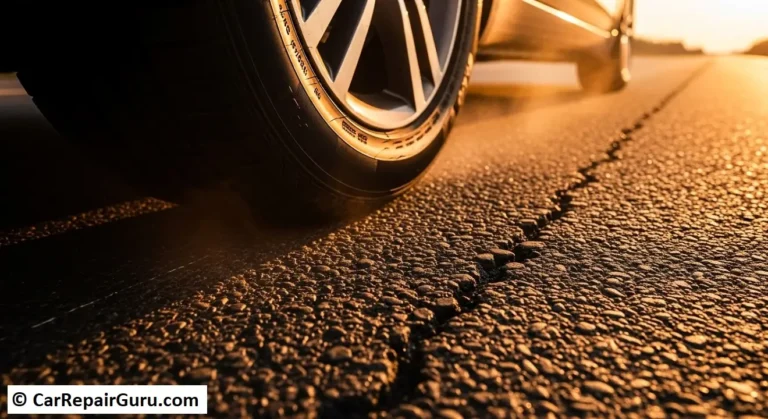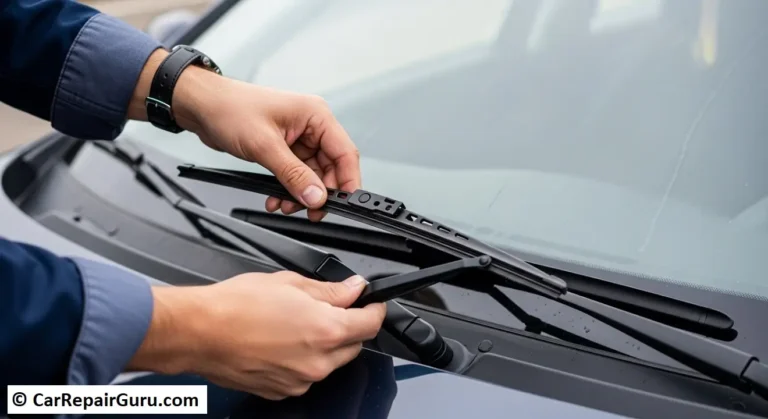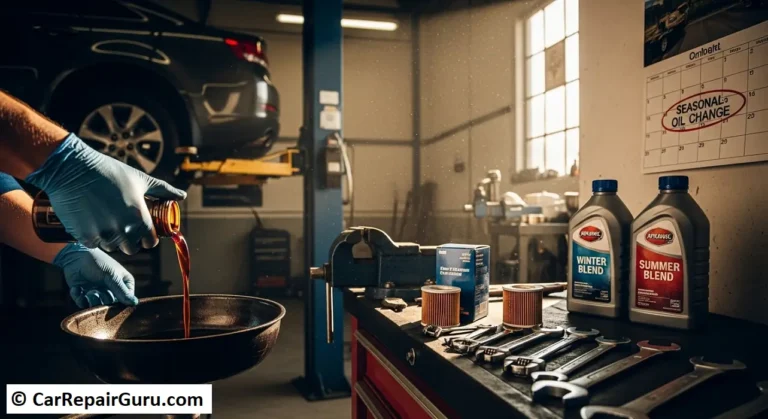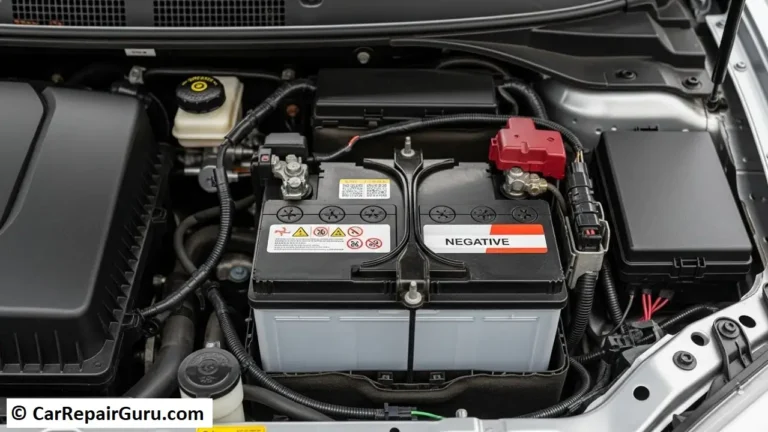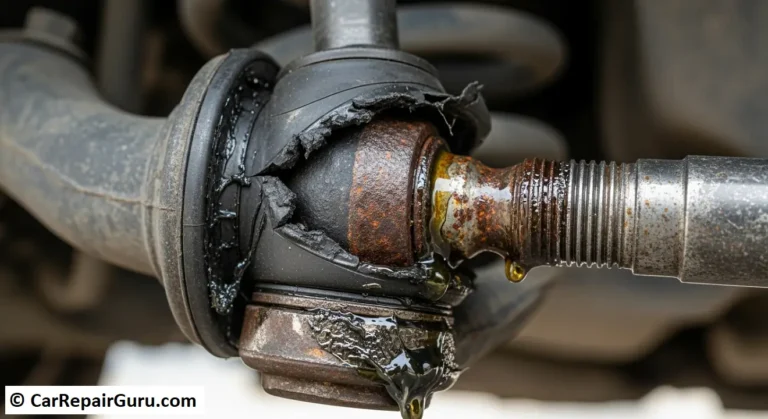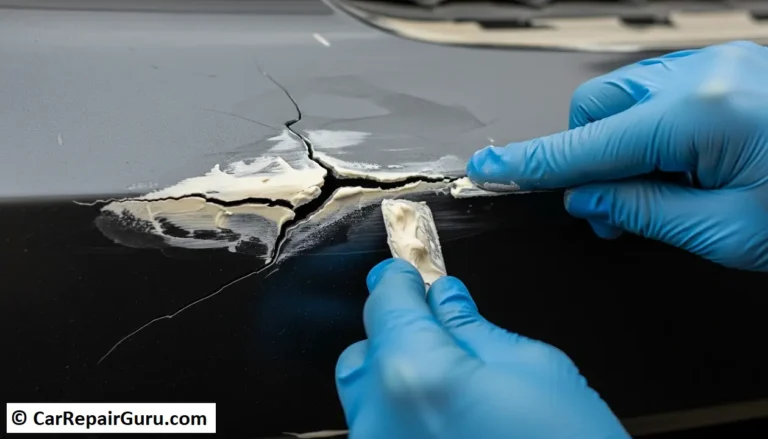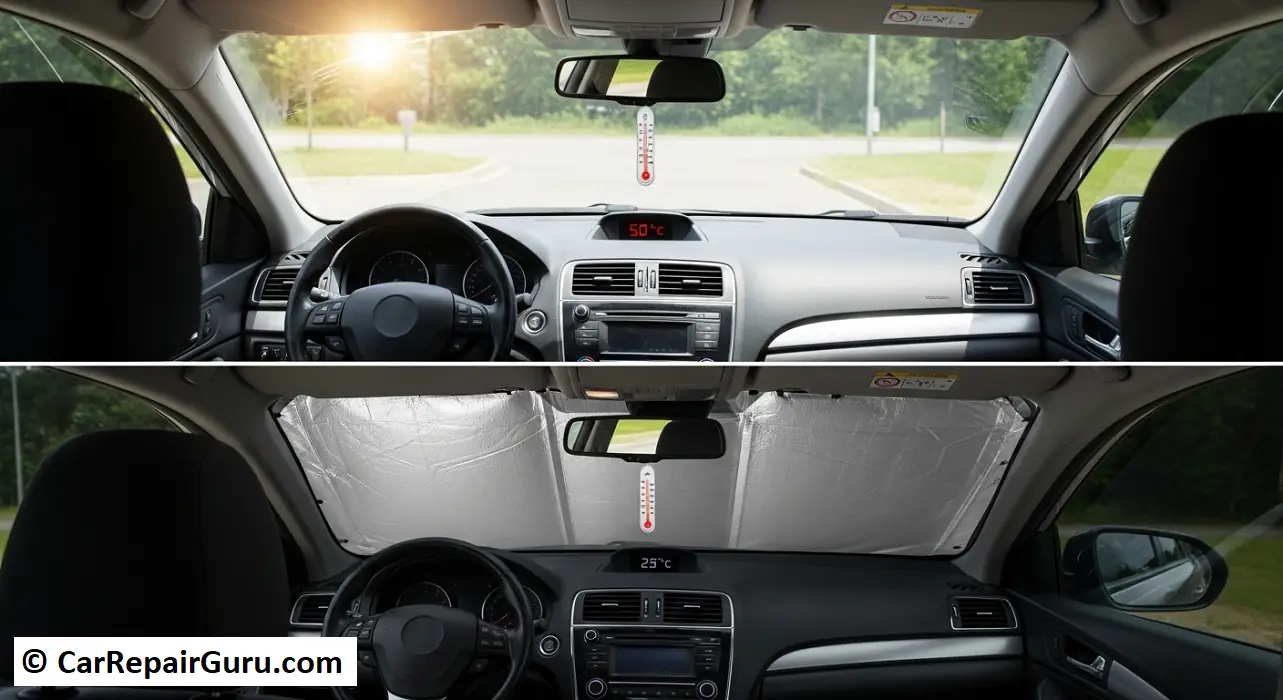
We’ve all been there. You walk across a scorching hot parking lot on a summer afternoon, you see the heat shimmering off the asphalt, and you brace yourself. You open your car door and it hits you: a wall of superheated air that feels like a blast furnace. The steering wheel is too hot to touch, the leather seats threaten to sear your skin, and the metal seatbelt buckle feels like a branding iron.
This intense heat is more than just a temporary discomfort. It’s a relentless assault on your vehicle. Over time, the sun’s powerful UV rays and the extreme temperatures they create can cause irreversible damage—fading, cracking, and warping the very materials that make up your car’s cabin.
But you don’t have to surrender to the sun. This guide will provide you with a complete strategy to protect your car interior from summer heat. From simple, free habits to essential products, these 11 tips will help you keep your car cool, prevent costly sun damage, and preserve your vehicle’s value for years to come.
Why You Must Protect Your Car’s Interior from the Sun
Before we dive into the “how,” let’s quickly cover the “why.” Understanding the stakes will motivate you to take these simple steps seriously. The sun’s assault is a two-pronged attack of heat and ultraviolet (UV) radiation, leading to significant problems:
Prevents Fading and Discoloration
Those deep black dashboards and rich-colored seats? UV radiation acts like a relentless bleach, breaking down the chemical bonds in dyes and pigments. This leads to a dull, faded, and aged appearance.
Stops Cracking and Warping
The intense heat cycle—baking during the day and cooling at night—causes the plastic and vinyl on your dashboard and door panels to expand and contract. This stress eventually leads to brittle materials and ugly cracks. Proper UV protection for your car dashboard is the only way to prevent a cracked dashboard.
Preserves Electronics
Your infotainment screen, speakers, and any other in-car tech contain sensitive components that are not designed to operate in oven-like conditions. Extreme heat can lead to malfunction or permanent failure.
Maintains Resale Value
A clean, crack-free, and vibrant interior is one of a car’s biggest selling points. A neglected, sun-damaged interior can slash hundreds, if not thousands, of dollars from its resale or trade-in value. Excellent car interior care is an investment.
Enhances Comfort & Safety
Let’s be honest, no one enjoys getting into a sweltering car. Keeping the interior cooler makes every summer drive more pleasant and prevents you from fumbling with a dangerously hot steering wheel.
The Front Line of Defense – Blocking the Sun Before It Gets In
The most effective strategy is to stop the sun’s rays from ever entering your car in the first place. These tools are your first and best line of defense.
1. Invest in a Quality Windshield Sun Shade
Your car’s windshield is a giant magnifying glass aimed directly at your dashboard. It’s the single largest source of solar heat gain in your vehicle. A quality sun shade is non-negotiable for summer car care.
- Custom-Fit Shades: These are designed for your specific make and model, providing edge-to-edge coverage with no gaps for the sun to sneak through. They are often more rigid and have a higher-quality reflective surface.
- Accordion/Foldable Shades: These are the most common type. They are easy to store and universally available. When looking for the best car sun shade in this style, choose one with a highly reflective outer surface to bounce sunlight back out.
- Roll-Up Shades: A classic, simple design that is effective but can be a bit more cumbersome to store.
Pro-Tip: Always place the reflective side of the shade facing outwards. This reflects the sun’s thermal energy away from the car, rather than absorbing it.
2. Consider Professional Window Tinting
If you live in a perpetually sunny and hot climate, window tinting is one of the most effective long-term solutions you can invest in. Modern window films are incredibly advanced, doing much more than just darkening your windows.
High-quality tint can block up to 99% of harmful UV rays and reject a significant amount of solar heat.
- Carbon Tint: Offers good heat rejection and won’t fade over time like older, dyed films.
- Ceramic Tint: This is the premium option. Ceramic films are designed to block infrared radiation—the part of the light spectrum that produces heat. This means you can get superior heat rejection without having to use a very dark tint, keeping your car significantly cooler while maintaining excellent visibility.
Important Note: Every state has different laws regarding tint darkness (VLT – Visible Light Transmission). Before you buy, check your local regulations to ensure you are compliant.
3. Use Side and Rear Window Shades
Don’t forget the other windows! While the windshield is the primary culprit, sun coming through the side windows can damage your door panels, seats, and any passengers you have in the back. Simple static cling or mesh window shades are an inexpensive and effective way to provide extra protection.
Surface-Level Protection – Shielding Your Dashboard and Seats
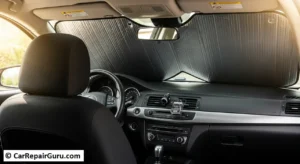
Once the sun is inside, your next step is to protect the surfaces themselves from the heat and UV rays that make it through.
4. Apply a Dashboard Cover or Protectant
Your dashboard takes the most direct and prolonged beating from the sun. Protecting it is critical.
- Dashboard Covers: A physical carpet or fabric cover is a simple way to completely block UV rays. They also reduce glare, which can be a nice bonus.
- UV Protectant Sprays/Wipes: Think of this as sunscreen for your car’s interior. A quality protectant will contain powerful UV blockers and conditioners that nourish the vinyl and plastic. This restores a rich, satin finish (avoid the greasy, shiny ones) and prevents the material from drying out and cracking. Regular application is a cornerstone of any plan to prevent sun damage in a car interior.
5. Use Seat Covers
Seat covers are a fantastic dual-purpose solution. They provide a physical barrier against UV rays, protecting your original fabric or leather upholstery from fading. They also make your car more comfortable to get into, as a light-colored canvas or breathable mesh cover won’t get nearly as hot as black leather or dark fabric.
6. Condition Your Leather Seats
Leather is a natural material that contains oils to keep it soft and supple. The intense heat of the sun literally bakes these oils out, leaving the leather dry, brittle, and prone to cracking. To prevent this, regularly clean and condition your leather seats every 1-2 months during the summer with a high-quality product that contains UV blockers for comprehensive leather seat protection.
Simple, Free Tricks to Keep Your Car Cool
Sometimes the most effective methods don’t cost a thing. Incorporate these simple habits into your daily routine to make a huge difference.
7. Park Smart – The Power of Shade
This is the most obvious yet most overlooked tip. Whenever possible, park in a garage, under a carport, or in the shade of a building or large tree. Even if you can only get partial shade for the afternoon, it’s better than nothing.
8. Crack the Windows (Safely)
Hot air rises. Leaving your windows cracked just an inch allows that superheated air to escape, creating a convection current that prevents the interior temperature from skyrocketing.
Crucial Caveat: Only do this in a safe, secure area where you aren’t concerned about theft, and always check the forecast for surprise rain showers!
9. Use a Steering Wheel Cover
A simple cloth or light-colored steering wheel cover can be the difference between driving away immediately and waiting ten minutes for the wheel to be cool enough to touch safely. You can also simply turn your steering wheel 180 degrees when you park, so the part you touch is in the shade.
10. Store Heat-Sensitive Items Out of Sight
Never leave heat-sensitive items in direct sunlight. This includes electronics like smartphones or GPS units, aerosol cans (which can explode), and even plastic water bottles, which can leak chemicals into the water or, in rare cases, focus sunlight and start a fire.
How to Cool Down a Hot Car Quickly
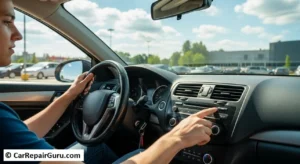
Even with the best preventative measures, sometimes you’ll still have to get into a hot car. Here’s how to cool down a hot car fast so you can get on your way.
11. The Window Fanning Trick
This amazing trick uses air pressure to rapidly flush hot air out of your car.
- Roll down the front passenger-side window completely.
- Leave all other windows and doors closed.
- Go to the driver’s side door and open and close it firmly (but not slam it) five or six times.
- This motion acts like a bellows, actively pumping the hot air out of the open passenger window and drawing cooler, ambient air in. You’ll feel the difference instantly.
Use Your AC the Right Way
Blasting the AC on max from the start isn’t the most efficient method.
- Step 1: As you start driving, open the rear windows for the first 10-20 seconds. This will help push the trapped hot air out as you move.
- Step 2: Close the windows and switch your AC system to the “recirculate” setting (the button with a U-turn arrow inside a car). This tells the AC to cool the already-cooling air inside the cabin instead of continuously trying to cool the hot air from outside, making the system work much more efficiently.
A Cooler, Longer-Lasting Interior
Protecting your car’s interior from the brutal summer heat isn’t about any single magic bullet. It’s about a combined strategy of blocking the sun with shades and tints, protecting surfaces with covers and conditioners, and practicing smart habits like parking in the shade.
By taking these steps, you’re not just making your summer drives more comfortable. You are actively fighting against depreciation, preventing costly repairs, and ensuring that your car’s interior remains a pleasant and valuable space for years to come.
What’s your go-to trick for beating the summer car heat? Share your tips in the comments below
Frequently Asked Questions
Do car sun shades really work?
Yes, sun shades are highly effective. They work by reflecting sunlight to block both heat and UV rays. This can significantly lower the interior temperature and is the best way to prevent your dashboard from cracking and fading.
Is ceramic window tint worth the extra cost?
For drivers in hot climates, yes. Unlike standard tints that just darken windows, ceramic tint is specifically designed to block infrared rays (the source of heat). This keeps your car much cooler without requiring an extremely dark tint.
What is the best way to prevent my dashboard from cracking?
The best method is a two-step approach: 1) Consistently use a reflective windshield sun shade to block direct UV exposure. 2) Regularly apply a quality interior UV protectant spray to keep the material conditioned and prevent it from drying out.
What is the best color for a car interior in a hot climate?
Lighter-colored interiors (like tan, beige, or gray) are much better for hot climates. They reflect more sunlight and absorb less heat than dark colors like black, resulting in surfaces that stay cooler to the touch.
